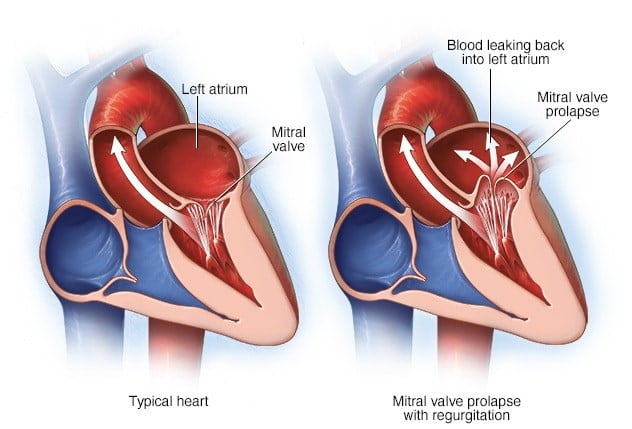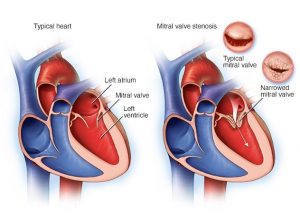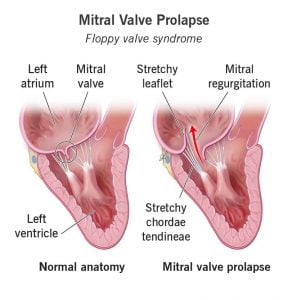Make an Appointment Now
info@macitbitargil.com
Acıbadem Hospitals
Make an Appointment Now
info@macitbitargil.com
Acıbadem Hospitals

The heart, which is one of the most vital organs, beats an average of one hundred thousand times every day. As a result, it carries 5 liters of blood in the circulatory system to the tissues and organs.
Rhythmic contraction of the heart ensures blood circulation. There are 4 chambers in the heart. The upper chambers are known as 2 atria and the lower chambers are known as 2 ventricles.
The function of the valves located between the valves between the chambers is to ensure that the blood is pumped correctly. After the blood in the circulatory system enters the heart from the right atrium, it is transferred to the right ventricle. When the heart contracts, the blood in the area passes through the pulmonary valve and goes to the lungs for purification. After being oxygenated in the lungs, it enters the atrium. The blood, which reaches the last ventricle through the mitral valve, passes through the aortic valve and is pumped to the whole body through the aorta.
The mitral valve is located between the left atrium and left ventricle of the heart. It has a structure consisting of two leaflets. After the blood comes from the lung to the left atrium via the pulmonary veins, it passes through the mitral valve and reaches the left ventricle.
When the ventricle fills with blood, the heart contracts and the aorta pumps blood throughout the body. While the blood is being pumped, the mitral valve is closed to prevent the pumped blood from going back to the left atrium due to the opening of the aortic valve. With the completion of this process, the heart fully fulfills its normal function.
In people with mitral valve disease, it may be difficult for the blood to pass from the left atrium to the left ventricle, and blood can flow back from the last ventricle to the left atrium. Since mitral valve diseases that are not noticed in the early stages have an insidious course, the symptoms caused by the disease lead to complaints if the disease progresses. Functional disorders due to mitral valve diseases usually cause symptoms such as shortness of breath, chest pain, bloody sputum, fatigue and palpitations.
Heart diseases can be congenital or they can occur later due to various reasons, that is, they can be acquired. Acquired valvular diseases are usually caused by rheumatic fever occurring in childhood or by advancing age. In addition, there is a risk of damage to the mitral valve, which is one of the heart valves, as a result of conditions such as a heart attack.
Although rare in adults, especially in the aortic and mitral valves, stenosis and/or leakage may occur as a result of calcification of the tricuspid valve. These disorders may cause valve disorders and it may be difficult for the person to perform activities that require effort, such as climbing stairs, which he/she could do without difficulty before. Mitral valve diseases can cause different complaints and diseases such as shortness of breath, fatigue, heart failure and rhythm disturbance.
Mitral prolapse is a condition caused by the mitral valve on the left side of the heart not closing properly. As a result of any abnormality of the mitral valve leaves, mitral valve prolapse of different intensities can be seen as a result of the valves being too wide and collapsing towards the atrium. This may be due to one of the leaves being larger or abnormally shaped than the other.
Mitral prolapse may not be diagnosed until adulthood, as it is usually asymptomatic and does not interfere with daily life. In case of diagnosis in childhood, it is possible to distinguish it from the symptoms of other heart diseases if the symptoms accompanying mitral valve prolapse are known.

In mitral valve prolapse, there is a risk of deterioration of the structure of the heart valve in some cases. Due to the deteriorated valve, the valve cannot be closed completely and some of the blood returns to the left atrium, resulting in mitral regurgitation.
Mitral regurgitation can be very mild or severe. In cases with severe mitral regurgitation due to mitral prolapse, surgical replacement of the mitral valve may rarely be required. If there is no structural defect in the mitral valves, only collapse is observed, valve replacement is not required.
Except for those who have severe mitral insufficiency, it is not necessary for patients to have any restrictions in their lives in the problem of mitral valve prolapse. However, regular visits to the doctor should not be neglected.
Mitral valve repair can be performed in order to eliminate problems such as stenosis and insufficiency in the mitral valve, while preserving the structure of the valve and without the need for replacement.
As the patient’s own mitral valve remains in place within the scope of this procedure, it is not possible to replace it with artificial valves. It may be preferable to apply different methods in order to correct the damaged parts of the valve.
Mitral valve repair is always the preferred method in the treatment of mitral valve diseases. The condition of the cover must be suitable for this. Mitral valve repair is only possible in cases where the defects are not severe. In order for mitral valve repair to be performed, heart valve leaves should be regular, there should be no stenosis with heart valve leakage, there should be no roughness or clots on the valve, the valve leaves should be able to approach each other easily, and when the stenosis can be opened, it should not leak backwards.
In surgeries in which structures that cause loss of function in the mitral valve are corrected, the heart is stopped by using the heart and lung machine. The mitral valve is reached and the damaged parts of the valve are removed, the remaining tissues are sutured. In addition, necessary intervention is carried out by making new strands or repairing leaflets with patches. Usually, a ring is placed around the valve and the surgery is completed. It should be checked whether the procedure carried out for the purpose of repair was successful. If the applied repair procedure is not sufficient, additional interventions or valve replacement may be required. Within the scope of the surgical procedure, standard incisions made from the front or small incisions made from the side can be applied for the patient.
Mitral Valve Replacement
In cases where mitral valve repair is not possible, mitral valve replacement is considered. Accordingly, after the mitral valve is removed by surgical procedures, a mechanical or biological valve is placed in its place.
Mitral valve replacement may be required in cases of severe stenosis of the heart valves or in some cases, in cases where both conditions coexist, severe calcification of the valve, clots in front of the valve or inside the heart, and heart rhythm disturbances.
If a mechanical valve is used in mitral valve replacement, the patient must take anticoagulants throughout his/her life. In biological valve replacement, biological valves such as that of pig, cattle or human are used. If a biological heart valve, also known as a bioprosthesis, is placed, the patient does not need to take blood thinners. As a result of the wear of the biological valves over the years, the necessity of reoperation may arise.
Considerations After Mitral Valve Surgery

One of the most important issues to be considered after mitral valve surgery is that patients regularly take blood thinners and other drugs prescribed by their doctors.
After the surgery, the healing process is usually completed within 6 to 8 weeks. During the recovery period, breathing exercises should be done and compression stockings should be worn. After the operation, a trace of the incision remains. Along with the healing process, this scar gradually becomes vague depending on factors such as the patient’s skin structure.
In addition, due care should be taken for protection from a possible infection. In cases such as surgical procedures that may result from a different disease, the patient should definitely contact his/her doctor. Thus, it may be possible to take the necessary precautions against a possible infection.
It is very important that the patient does not interrupt the routine doctor checks in order to follow the heart and heart valve.
All content on the website is for informational purposes only. Consult your doctor for diagnosis and treatment methods.
2022 © All Rights reserved | Design & SEO & Development Simur Digital